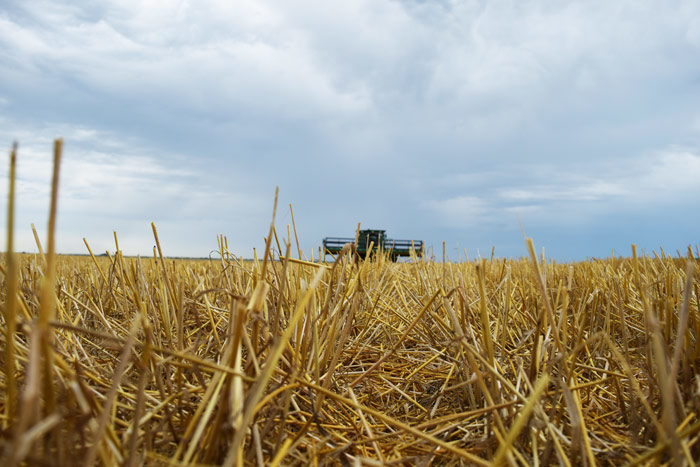By Ruth Beck, Agronomy crops field specialist SDSU Pierre Regional Center
There are years when, for one reason or another, it may be tempting for producers to bale and sell wheat or corn straw. Years when livestock feed or bedding is in short supply or some other venture makes the sale of straw appealing.
The benefits of leaving crop residue on the soil surface through farm practices such as no till are numerous. In addition to reducing soil erosion, old crop residue will catch and retain moisture, mitigate soil temperature fluctuations during extremes and contribute to soil organic matter. These benefits are hard to measure and often lose out to short term gains.
Data from SDSU indicates that wheat straw contains approximately 10 lbs. of nitrogen (N), 3 lbs. of phosphate (P2O5), 31 lbs. of potash (K2O), and 2 lbs. of sulfur (S) per ton. The value of these nutrients can amount to $12-14/ton straw. Research from Nebraska and South Dakota indicates a 20 bushel wheat crop can produce around a ton (2000 lbs.) of straw. Therefore a 60 bushel/acre wheat crop which produces about 3 ton straw will hold approximately $36-40 worth of nutrients. Corn stover can hold approximately 16 lbs N, 4 lbs P205, 29 lbs K20 and 3 lbs of S per ton. A field that yields 150 bu per acre could produce up to 4 tons of stover. This adds up to approximately $70/acre in nutrients (N= $0.40/lb, P205=$0.175/lb, K20=0,28/lb). These nutrients are lost when straw is removed from fields. The value of the nutrients does not include the cost of baling the residue or the intrinsic costs associated with the loss of residue and the role residue plays in protecting and building the soil.
However, the biggest cost of residue removal is the loss of carbon held in the residue. Carbon is one of the largest components of soil organic matter. The decomposition of old crop residue is part of the building process in soil organic matter. Higher levels of organic matter in soils correlates to improved soil structure, resilience, nutrient availability and water holding capacity.
The carbon held in crop residue cannot be replaced through fertilizer applications like other nutrients. It has to be produced through the process of photosynthesis, residue decomposition and other biological processes, all of which take time. Soil quality isn’t always easy to measure and landowners and producers are not always compensated for practices that protect the soil. But building and maintaining soil quality is tied to long term profit and to our ability to feed ourselves. I encourage people to keep in the mind the many positive contributions that crop residues provide and keep soils covered.
Related Content
-
Digging Into the Principles of Regenerative Ag
Based on the principles of building healthy soil, regenerative ag aims to not only sustain farm productivity but to actually work with nature to regenerate the soil, increase biodiversity and enhance the farming ecosystem.







Post a comment
Report Abusive Comment